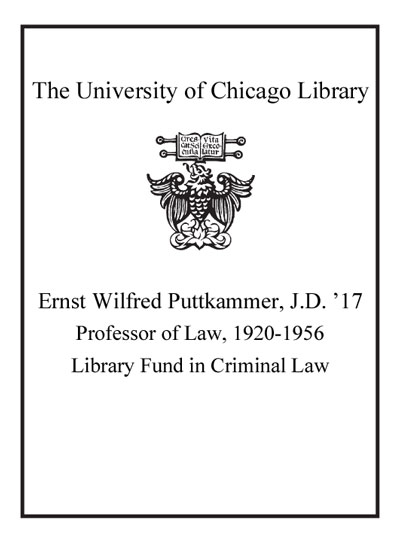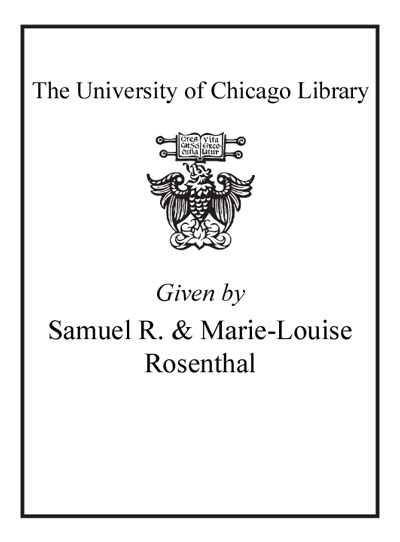Police traffic stops and racial profiling : resolving management, labor, and civil rights conflicts /c by James T. O'Reilly.
Saved in:
| Author / Creator: | O'Reilly, James T., 1947- |
|---|---|
| Imprint: | Springfield, Ill. : Charles C. Thomas, c2002. |
| Description: | xviii, 285 p. ; 27 cm. |
| Language: | English |
| Subject: | |
| Format: | Print Book |
| URL for this record: | http://pi.lib.uchicago.edu/1001/cat/bib/4697727 |
Table of Contents:
- Preface
- Part I. The Traffic Stop
- Chapter 1.. Introduction
- Chapter 2.. Traffic Stops and Police Investigations
- 2.1. The Fourth Amendment and Traffic Stops
- 2.2. Policing in a Mobile Society
- 2.3. Can Traffic Stops be a Pretext Reason for Investigations?
- 2.4. The Value of Traffic Stops
- 2.5. The Five Phases of the Traffic Stop
- Chapter 3.. Phase 1 of the Traffic Stop: Selection of Drivers to Stop
- 3.1. Discretion
- 3.2. Traffic Violations Justify Stops
- 3.3. Driver Selection Difficulties
- 3.4. Radar
- 3.5. Policies
- Chapter 4.. Phase 2: Driver Inquiries and Checks
- 4.1. Inquiries
- 4.2. Delays and Checks under the Constitution
- 4.3. Reliance on Computer Checks
- 4.4. When Does Delay Amount to an Arrest?
- 4.5. State-specific Limitations
- 4.6. Officer Safety Considerations
- Chapter 5.. Phase 3: Searches of the Stopped Vehicle
- 5.1. Vehicle Searches and the Constitution
- 5.2. What is a "Search"?
- 5.3. Search of the Occupants of the Vehicle
- 5.4. When is Consent to Search Required?
- 5.5. Forms of Consent
- 5.6. Exigent Circumstances
- 5.7. Methods of Search
- 5.8. When Consent is Not Needed
- 5.9. Remedies Against Illegal Searches
- Chapter 6.. Phase 4: Suppression of Evidence
- 6.1. "Fruits" of the Traffic Stop
- 6.2. Suppression Hearings
- 6.3. Advocates' Views
- 6.4. Suppression Debates
- 6.5. Suppression and Section 1983
- Chapter 7.. Phase 5: Civil Rights Claims Based on Stops
- 7.1. Section 1983 Actions
- 7.2. Who Can Be Sued?
- 7.3. Criteria for Recovery of Damages
- 7.4. What Will Plaintiffs' Lawyers Seek?
- 7.5. Damages Need Not Follow State Remedy Requirements
- 7.6. The Defense of Qualified Immunity
- 7.7. Other Defenses
- 7.8. State Immunity
- 7.9. Why Do Governments Settle?
- Part II. Racial Profiling
- Chapter 8.. History of the Racial Profiling Challenges
- 8.1. Background
- 8.2. Subcategories of Concerns
- 8.3. The Campaign Begins
- 8.4. How the Campaign Developed
- 8.5. Importance of Statistically Valid Comparisons
- 8.6. Influences on the New Jersey Cases
- 8.7. The ACLU and NAACP Efforts
- Chapter 9.. The Ideological Context
- 9.1. Racial Profiling and the Drug War
- 9.2. Criticism of the Supreme Court
- 9.3. Neighborhood Segregation and Racial Profiling
- 9.4. Racial Profiling and Police Personnel
- 9.5. Racial Profiling and Civil Rights Individual Remedies
- 9.6. Racial Profiling and Community Relations
- Chapter 10.. Racial Profiling Litigation
- 10.1. Race in Traffic Stop Cases
- 10.2. Supreme Court Decisions
- 10.3. Federal Decisions
- 10.4. Predictions for Future Litigation
- 10.5. How will Legislation Impact on Litigation?
- Part III. Experiences
- Chapter 11.. The New Jersey Experience With Racial Profiling Remedies
- 11.1. Introduction
- 11.2. The New Jersey State Police
- 11.3. Why Was New Jersey Targeted?
- 11.4. Incentive Systems
- 11.5. Criminal Defense Discovery Motions
- 11.6. Internal Dissenters
- 11.7. Awareness of Racial Statistics
- 11.8. The Interim Report
- 11.9. The Consent Decree
- 11.10. Legislative Responses
- 11.11. Consent Decree Impacts
- 11.12. Effects on Discipline
- 11.13. Effects on Drug Prosecutions
- 11.14. Complaints and Damage Payments
- 11.15. Conclusions
- Chapter 12.. Other State and Local Experiences
- 12.1. Maryland
- 12.2. Illinois
- 12.3. Ohio
- 12.4. Los Angeles
- 12.5. New York
- 12.6. Minnesota
- Chapter 13.. Federal Experience
- 13.1. The Federal Role
- 13.2. Justice Department Civil Rights Roles
- 13.3. Congress
- 13.4. Drug Enforcement Agency
- 13.5. Federal Bureau of Investigation
- 13.6. Immigration & Naturalization Service
- 13.7. Other Federal Entities
- Part IV. The Legal Issues
- Chapter 14.. The Police "Pattern or Practice" Statute
- 14.1. Understanding the History
- 14.2. Early Attempts and Hearings
- 14.3. Coverage of Section 14141
- 14.4. Process Features of Section 14141
- 14.5. What 14141 Does Not Do
- 14.6. Justice Department Roles
- 14.7. Supporters' Views of 14141
- 14.8. What 14141 Means to the Justice Department
- 14.9. Critical Views on 14141
- 14.10. Statistics and Resources
- 14.11. Should Police Departments Fear 14141 Litigation?
- 14.12. How Will Courts Respond?
- Chapter 15.. Police Defenses and Settlements
- 15.1. Political Realities
- 15.2. Steps to Educate Key Decisional Officials
- 15.3. Could the Federal Prosecutor Lose?
- 15.4. Litigation of the 14141 Case
- 15.5. Rebutting the Evidence
- 15.6. Risks of a Consent Order
- Part V. The Consent Decrees
- Chapter 16.. The Judicial Role
- 16.1. Judicial Workloads
- 16.2. Burden of Proof
- 16.3. Federalism and States
- 16.4. Masters
- 16.5. Contempt Roles
- 16.6. Consent Decrees Remain for Years
- Chapter 17.. Monitors Overseeing Police
- 17.1. Monitor Functions
- 17.2. Selection of Monitors
- 17.3. Reports and Responses
- 17.4. Costs
- 17.5. Monitor Oversight of Discipline
- 17.6. Contempt Orders and Monitors
- Chapter 18.. Surviving a Consent Decree
- 18.1. Intervention by Unions in 14141 Consent Decrees
- 18.2. Why Would Unions Be Deterred?
- 18.3. Union Intervention
- 18.4. Consent Decree Fairness Hearings
- 18.5. Dissolution of Decrees
- Chapter 19.. Costs and Budgets Required for Racial Profiling Remedial Actions
- 19.1. What is the Minimal Change Needed?
- 19.2. What Can Consent Decrees Require?
- 19.3. Elements of Budgets
- 19.4. Ongoing Expenses
- Part VI. Litigation Effects
- Chapter 20.. Individual Suits Against Police
- 20.1. Individual Suits
- 20.2. Stops without Arrest or Physical Restraints
- 20.3. Tort and Constitutional Claims
- 20.4. Physical and Property Damage Cases
- 20.5. Unlawful Detention
- 20.6. Assault and Battery
- 20.7. Qualified Immunity
- Chapter 21.. Impacts of the Remedial Actions on Street-Level Police Conduct
- 21.1. When will Traffic Stops Occur?
- 21.2. When will Searches Occur?
- 21.3. What are the Supreme Court Trends?
- 21.4. What Additional Limits Will Consent Decrees Impose on Police?
- 21.5. Would Consent Decrees Lead to More Suppression of Evidence?
- 21.6. How Will Patrol Officers Respond?
- Part VII. Roles
- Chapter 22.. Role of Elected Officials
- 22.1. Political Contexts
- 22.2. Constitutional Liabilities
- 22.3. Governmental Immunity
- 22.4. Legislative Roles
- Chapter 23.. Role of Police Managers
- 23.1. New Challenges
- 23.2. The Silence of the Chiefs
- 23.3. Civil Rights Liability of Departments
- 23.4. Civil Rights Liability of Chiefs
- 23.5. Effects of the Consent Orders
- 23.6. Union Role in Pre-Decree Negotiations
- 23.7. Employer Refusal to Bargain
- 23.8. Contrasting Monitor and Union Roles
- 23.9. Officer Disengagement and Attrition
- 23.10. External Complaint Reviews
- 23.11. Conclusions
- Chapter 24.. Roles of Police Unions
- 24.1. Public Roles
- 24.2. Pragmatic Roles
- 24.3. Adoption of New Policies
- 24.4. Unions Cannot Be Ignored
- 24.5. The Negotiating Opportunity
- 24.6. Union Intervention
- 24.7. Incentive Programs
- 24.8. Learnings from Others' Experience
- 24.9. Federal Receptivity
- 24.10. Local Politics
- 24.11. Consent Decree Effects on Discipline
- 24.12. Bargaining Over Discipline Systems
- 24.13. Union Civil Liabilities
- 24.14. Media Relations
- 24.15. Future Directions for Police Unions
- Part VIII. Consequences of Consent Decrees
- Chapter 25.. Discipline
- 25.1. Basic Elements
- 25.2. Notice of Violative Conduct
- 25.3. Relationship to Brutality Allegations
- 25.4. Defining the Offense to be Punished
- 25.5. Burden of Proof
- 25.6. Training and Reassignment
- 25.7. Complaint Follow-up
- 25.8. Documentation
- 25.9. Falsification of Records
- 25.10. Insubordination
- Chapter 26.. Arbitration of Racial Profiling Discipline
- 26.1. How Racial Profiling Claims Come to Arbitration
- 26.2. Setting Up for Arbitration
- 26.3. Participation
- 26.4. Proving the Violation to the Arbitrator
- 26.5. Police Management Dilemmas
- 26.6. Use of Progressive Step Discipline
- 26.7. Contrasts to Private Sector Discipline
- 26.8. Influence of Monitors
- 26.9. Evidence in the Grievance Arbitration Hearing
- 26.10. Statistical Comparisons
- 26.11. Other Grounds and Motives
- 26.12. Contract Interpretation Grievances
- 26.13. Why Would Employers Lose?
- 26.14. Court Review
- 26.15. Backlash Against Discipline
- Chapter 27.. Police-Community Relations Effects
- 27.1. Community-Oriented Policing
- 27.2. Advocates' Views
- 27.3. Other Perspectives
- 27.4. Public Relations & Driver Racial Statistics
- 27.5. Statistical Exercises and Disagreements
- Chapter 28.. Long-Term Effect of Remedies Upon Police Administration
- 28.1. Forecasting the Future
- 28.2. Criminal and Civil Liability
- 28.3. Quality of Management
- 28.4. Effects On Police Supervisors
- 28.5. Effects On Street Level Enforcement
- 28.6. Effects On Drug Interdiction
- 28.7. Effects On Traffic Enforcement
- 28.8. Quality of Prosecutorial Effectiveness
- 28.9. Federalizing Police Standards
- Chapter 29.. Avoiding Racial Profiling Charges
- 29.1. Community Relations
- 29.2. Police Need for Community Assistance
- 29.3. Enhancing Police Cultural Awareness
- 29.4. Soliciting Comments
- Chapter 30.. The Role of Training
- 30.1. Enhanced Officer Training
- 30.2. Quality of Data Collected for Analysis
- 30.3. Testers
- Chapter 31.. Conclusions
- Appendix
- Bibliography
- Index


